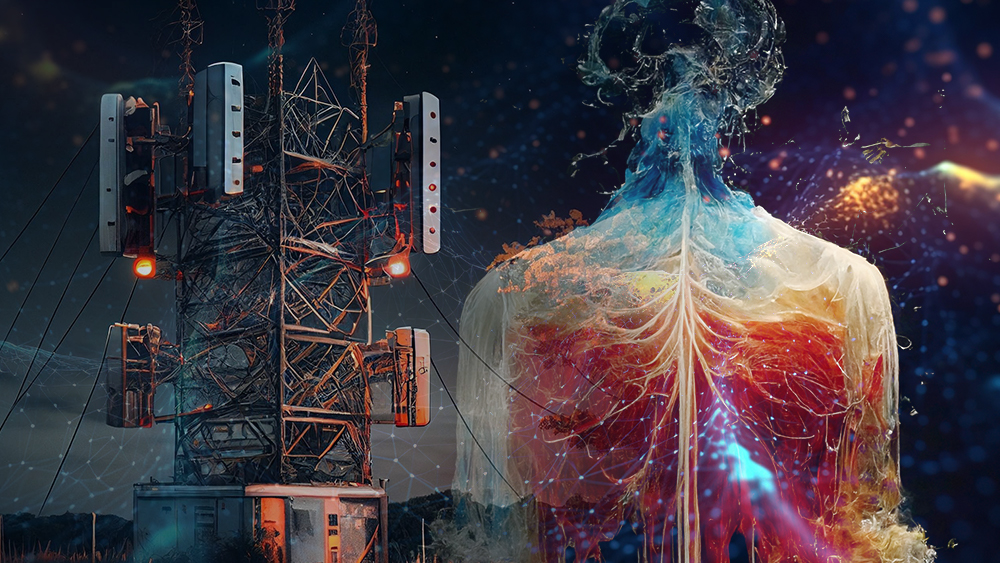
A science paper published in MaterialsToday Chemistry reveals that cell phone signals can be used to release biological or chemical payloads from graphene oxide that’s introduced into the human body. The paper, published in September of 2022, is entitled, “Remotely controlled electro-responsive on-demand nanotherapy based on amine-modified graphene oxide for synergistic dual drug delivery.”
The study abstract reveals how a cell phone can emit signals to activate a low voltage current that interacts with Graphene Oxide (GO) molecules, causing efficient delivery of drug payloads:
This study aims to determine low-voltage-controlled dual drug (aspirin and doxorubicin) release from GO surface. Here, we have demonstrated how to control the drug release rate remotely with a handy mobile phone, with zero passive release at idle time.
Because of its extremely high surface area and complex structure composition, graphene oxide turns out to be the perfect molecule for delivery of biological or drug payloads inside the body. From the study:
These advantages make GO an extremely potential nanocomposite material as a drug carrier in the field of biomedicine and biotechnology, while being combined with a polymer or inorganic matrix.
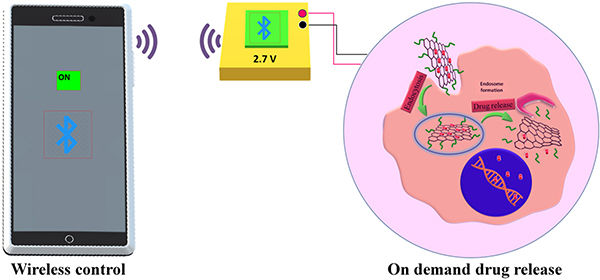
Importantly, the presence of a specific frequency of a low voltage current is all that’s necessary to cause graphene oxide to release its payload.
5G cell tower signals create micro currents inside the body
We already know that 5G signals can generate electrical currents inside the human body, even from a significant distance. An important article authored by Dr. Joseph Mercola and published in Childrens Health Defense reveals that 5G cell signal radiation results in measurable biological and chemical changes inside the human body. From his article:
- 5G relies primarily on the bandwidth of the millimeter wave, known to cause a painful burning sensation. It’s also been linked to eye and heart problems, suppressed immune function, genetic damage and fertility problems.
- The Federal Communications Commission (FCC) admits no 5G safety studies have been conducted or funded by the agency or telecom industry, and that none are planned.
- The FCC has been captured by the telecom industry, which in turn has perfected the disinformation strategies employed by the tobacco industry before it.
- Persistent exposures to microwave frequencies like those from cellphones can cause mitochondrial dysfunction and nuclear DNA damage from free radicals produced from peroxynitrite.
- Excessive exposures to cellphones and Wi-Fi networks have been linked to chronic diseases such as cardiac arrhythmias, anxiety, depression, autism, Alzheimer’s and infertility.
The Cellular Phone Task Force website lists numerous warnings from governments and agencies around the world who have sounded the alarm on cell phone radiation and its harmful effects on human biology.
Radiofrequency microwave radiation causes voltage changes inside the body’s cells, altering calcium channels
Additionally, compelling research led by Martin Pall, Ph.D., Professor Emeritus of biochemistry and basic medical sciences at Washington State University, reveals that microwave radiation from mobile devices and wireless routers causes voltage changes inside the body’s cells, activating what are called “Voltage-Gated Calcium Channels” (VGCCs), which are located in the outer membrane of your cells. It is this membrane that determines what passes into and out of the cell.
See the full study by Martin Pall, PhD., entitled: Electromagnetic fields act via activation of voltage-gated calcium channels to produce beneficial or adverse effects. That study explains:
Twenty-three studies have shown that voltage-gated calcium channels (VGCCs) produce these and other EMF effects… Furthermore, the voltage-gated properties of these channels may provide biophysically plausible mechanisms for EMF biological effects.
From Dr. Mercola’s article linked above: (emphasis added)
According to Pall’s research radiofrequency microwave radiation such as that from your cellphone and wireless router activates the voltage-gated calcium channels (VGCCs) located in the outer membrane of your cells.
According to Pall, VGCCs are 7.2 million times more sensitive to microwave radiation than the charged particles inside and outside our cells, which means the safety standards for this exposure are off by a factor of 7.2 million.
Low-frequency microwave radiation opens your VGCCs, thereby allowing an abnormal influx of calcium ions into the cell, which in turn activates nitric oxide and superoxide which react nearly instantaneously to form peroxynitrite that then causes carbonate free radicals, which are one of the most damaging reactive nitrogen species known and thought to be a root cause for many of today’s chronic diseases.
This means that cell phone radiation (and 5G cell tower radiation) does, indeed, induce voltage changes in the human body, and that these voltage changes have very real biochemical effects, some of which may be dangerous to human health (such as the formation of peroxynitrite molecules).
Fighting these potent free radicals can be achieved in part with nutritional approaches, such as through the use of superoxide dismutase enzyme (SOD), which is the foundational nutrient in the Health Ranger Store’s 5G Defense powders. Notably, SOD (which is usually derived from melon fruit) does not block cell tower radiation itself, but it helps the body respond to cellular stresses such as the formation of peroxynitrite molecules.
In related news reported by Reuters, French regulators have issued a warning to Apple to stop selling iPhone 12 phones due to the presence of excessive radiation produced by the devices. Apple’s smartphone exceeds the allowable legal limit of radiation. This phone has been sold since 2020.
5G signals may be used to cause Graphene Oxide to release payloads inside the human body
Connecting the dots on all this, 5G signals can be used to generate low voltage inside the human body, causing Graphene Oxide molecules to release predetermined payloads inside the body. Via the published paper linked above:
Upon application of external stimuli, many materials are able to release drugs. However, most of them need sophisticated instruments except electrical stimulation. Electro-stimulated drug delivery has attracted attention due to the low expense, painless, and portability of the control equipment, making it manageable for customized applications. In this study, we used NGO as an electro-sensitive material to deliver drugs in a controllable manner.
“This is the first time we have used ASP and DOX as a model drug which can be delivered simultaneously by external voltage,” the paper states. The conclusion of the paper adds: (emphasis added)
In conclusion, we have shown here that NGO can be used as a dual drug delivery agent, and the release of drugs can be controlled by an external voltage. To exploit the synergistic effect of ASP and DOX, we modified NGO and attached two drugs to it. Our labmade remote-controlled device efficiently released the anticancer drug. The releasing process can easily be switched on and off with a mobile phone by changing the bias voltage.
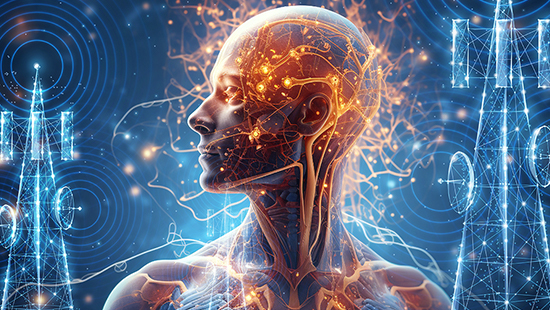
Graphene Oxide can carry biological or chemical weapons as payloads
In the scientific paper quoted above, the payload was aspirin plus a common cancer drug. However, payloads can be almost anything of sufficiently small size, including both hydrophilic and hydrophobic molecules. From the study, “We have also demonstrated how hydrophilic (ASP) and hydrophobic drugs (DOX) can be delivered by using a single delivery platform.”
This means that potent chemical weapons — theoretically including nerve agents that are fatal at nanograms of exposure — could be loaded into graphene oxide molecules which are surreptitiously delivered into the body via aggressively propagandized medical interventions such as fake vaccines or covid swabs. Theoretically, such weapons might be able to be delivered to the population via food vectors as well. Once in the body, a small amount of payload leakage may generate some level of nerve damage among inoculated victims, but the real payload delivery won’t happen until a proper 5G signal is broadcast across the inoculated population, using the “release frequency” that generates the required voltage to unleash the payload.
In other words, a 5G broadcast signal at the appropriate frequency could instantly cause graphene oxide molecules to release the payloads into the bodies of those who were previously inoculated with those payloads. This would happen simultaneously, across the entire population that is within range of the broadcast frequencies which generate the necessary voltage in the body.
If the payload were a nerve agent, the real world effect would be the sudden dropping dead of large portions of populations across cities where 5G broadcast are able to saturate them. If payloads were virus-like nanoparticles, payload delivery could cause a large portion of the population to suddenly appear to be “infected” with a pandemic virus that is spreading at unimaginable speed.
This technology, in other words, could be used as a “kill switch” to terminate whatever portion of the population was previously inoculated with payload-carrying GO.
“Black ink” printed on pharmaceutical capsules shown to be magnetic and may contain graphene oxide
Some additional information came to my attention during the writing of this article. The black ink printed on the side of pharmaceutical capsules actually consists of mysterious black specks which are magnetic. A contact sent me a video, represented in the following screen shot, showing pharmaceutical capsules soaked in water for several hours, after which the black “ink” from the capsules turned into black specs that displayed startling magnetic properties. In this still photo, you can see the black specs gather at the common magnet held against the glass:
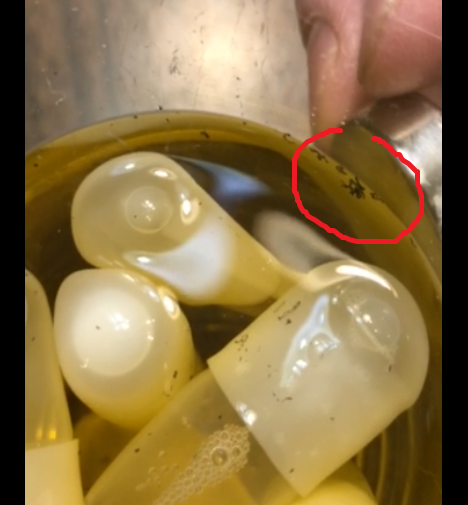
As this article reveals in LiveScience.com, stunning new research finds that graphene can be made magnetic by assembling layers in a specific rotational orientation. This gives rise to magnetism, even though the underlying atomic elements are nothing but carbon. From the article:
The magnetic field isn’t created by the usual spin of electrons within the individual graphene layers, but instead arises from the collective swirling of electrons in all of the three-layers of the stacked graphene structure, researchers reported Oct. 12 in the journal Nature Physics.
Is graphene being used in the “ink” that’s printed on the side of prescription medications? We don’t know for certain, but the fact that this ink is clearly magnetic is alarming.
Graphene oxide can also transmit gigahertz signals to nearby receivers
Additionally, under certain exotic applications of graphic oxide (GO) materials, those whose bodies are activated by cell tower broadcast could themselves function as electromagnetic “repeaters” due to the ability of GO to function as transmitters.
This capability is well documented in a study entitled, “Radio-frequency characteristics of graphene oxide,” published in Applied Physics Letters in 2010. (https://doi.org/10.1063/1.3506468) That study explains: (emphasis added)
We confirm graphene oxide, a two-dimensional carbon structure at the nanoscale level can be a strong candidate for high-efficient interconnector
in radio-frequency range. In this paper, we investigate high frequency characteristics of graphene oxide in range of 0.5–40 GHz. Radiofrequency transmission properties were extracted as S-parameters to determine the intrinsic ac transmission of graphene sheets, such as the impedance variation dependence on frequency. The impedance and resistance of graphene sheets drastically decrease as frequency increases. This result confirms graphene oxide has high potential for transmitting signals at gigahertz ranges.
Graphene oxide materials, in other words, can both carry payloads which are delivered via remote cell phone signaling, as well as transmit signals to other nearby receivers.
This could theoretically be used to start a “chain reaction” of 5G cell tower signals being re-broadcast from one person to another. In theory, this could extend a “kill switch” signal broadcast far beyond the initial range of 5G cell towers themselves.
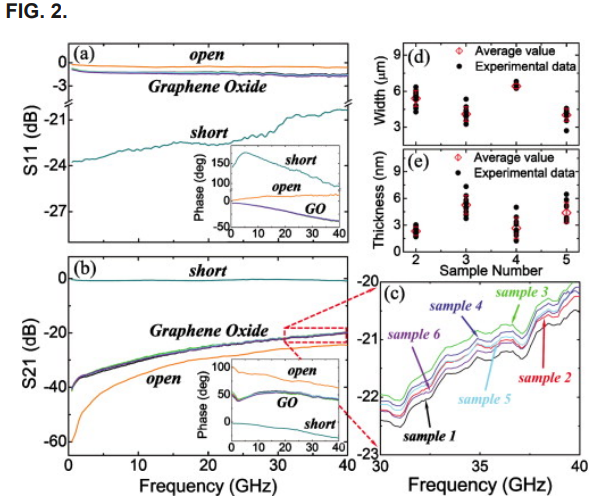
From the conclusion of that published paper:
…[W]e expect that GO could be used for transmission lines in next-stage electronics and could be very strong candidate for nanocarbon electronics.
Conclusions
- Graphene oxide can carry chemical or biological payloads.
- Graphene oxide carrying payloads can be introduced into the body through vaccines or swabs.
- The release of those payloads can be controlled by external cell tower signals which cause specific voltage changes in human cells.
- Some voltage changes are already known to occur with exposure to cell tower radiation, especially with 5G.
- Graphene oxide payloads can include “kill switch” payloads such as nerve agents or infectious agents.
- The 5G tower system can therefore function as a chemical weapons payload release infrastructure system to achieve a “mass kill” of populations which were previously inoculated with payload-carrying GO.
- Covid vaccines — which are now widely known to have had nothing to do with halting any pandemic (since even the White House and CDC both admit they do not halt transmission or infections) — could have theoretically been used to inoculate people with graphene oxide payloads which have not yet been activated.
Thus, it is plausible — but not proven — that vaccines + 5G cell towers could be exploited as a depopulation weapon system to achieve near-simultaneous mass extermination of a large percentage of the human population, simply by activating GO payload release with a specific broadcast energy intensity and frequency.
Given that the western governments of the world are clearly attempting to exterminate their own populations right now, this conclusion should be concerning to all those who wish to survive the global depopulation agenda.


